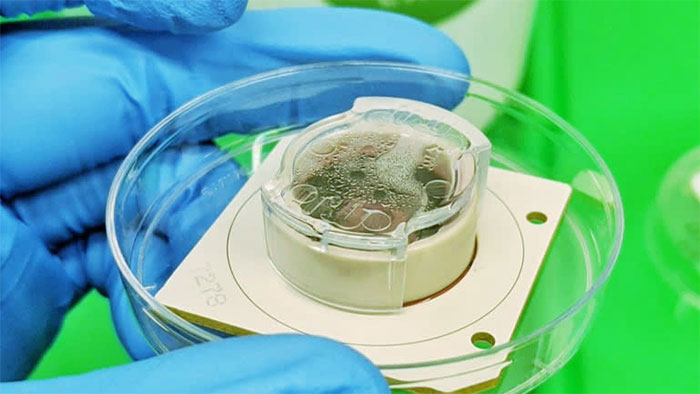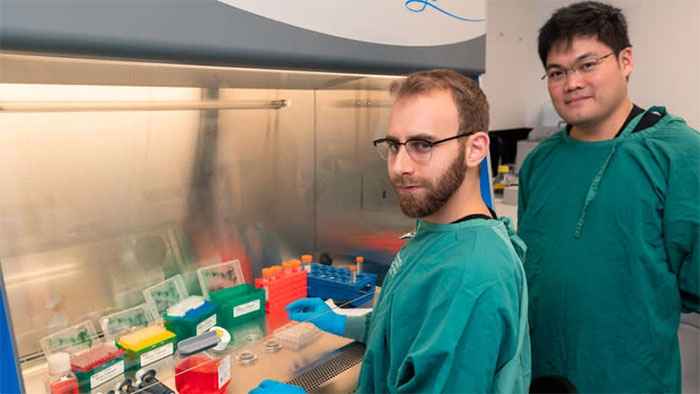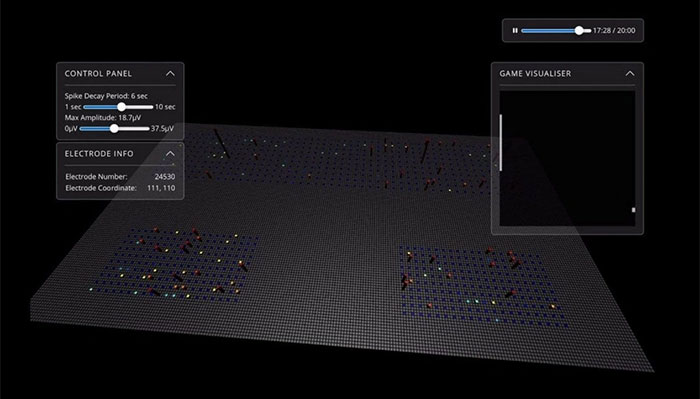Experts from Cortical Labs, Australia, have successfully researched how to integrate biological neurons with traditional information processing chips.
In a recent announcement, Cortical Labs – a company based in Melbourne, Australia, introduced technology that integrates biological neurons with information processing chips. “DishBrain,” the name given to the cultured brain cell group, has been “taught” to play the game Pong.
“DishBrain is a groundbreaking technology that helps us understand the intelligent properties of neurons,” said Hon Weng Chong, co-founder of Cortical Labs, in an interview with Nikkei Asia.
Cortical Labs hopes that applying human brain cells will enable high-performance chips to be much more energy-efficient compared to previous silicon chips.
The “Training” Process of DishBrain
To create DishBrain, the research team at Cortical Labs cultured nearly 1 million brain cells – equivalent to the brain of a cockroach. They then transferred the cell group to a microelectrode array made up of over 26,000 sensors.
When connected to a computer, the sensors transmit electrical signals to the neurons to simulate the game Pong – in this game, players control a paddle to hit a ball against a wall. The research team sends electrical signals to the microelectrode array to indicate the ball’s position. Then, the “brain” activates the neurons to move the paddle to the correct position.

Cortical Labs has extensively tested its DishBrain chip. (Photo: Nikkei Asia).
DishBrain will make decisions and relay this information to the computer through the sensors. The software then provides feedback on DishBrain’s actions. “These actions are repeated, forming a cognitive cycle,” described Kagan.
The team conducted over 4,000 testing sessions. Results showed that DishBrain took only 5 minutes to learn how to play Pong, much faster than artificial intelligence. The more the neurons played, the better they became, with performance improving by approximately 67% over time.
Potential of This Technology
Cortical’s chip represents a new breakthrough in creating smarter and more efficient artificial intelligence systems. Additionally, this technology could help scientists gain a better understanding of the mysteries of the brain and develop treatments for neurological diseases.
The application of neurons on chips is gaining increasing attention, as this technology helps create “a much more efficient computational operation method,” said Karl Friston, a neuroscientist at University College London in the UK.

Cortical Labs hopes that using human brain cells will make high-performance chips more energy-efficient. (Photo: Nikkei Asia).
The application of living neurons will be very useful in situations requiring fast processing and calculation capabilities, such as in self-driving cars. Furthermore, the potential for this technology to aid research is immense.
According to Mark Kotter, a neuroscientist at the University of Cambridge, DishBrain is the key to unlocking research into neurological or psychiatric diseases. Cultured brain cells can provide critical insights into Parkinson’s, Alzheimer’s, and other diseases much more effectively than studies on animals.
Kotter continued: “I am very excited about DishBrain because this technology will help build a solid foundation for researching errors in information processing. However, he issued a warning. “I think the hardest part is turning a concept into a product that can be practically scaled. That’s a problem we shouldn’t underestimate.”
Challenges
Other experts question the feasibility of using living neurons to power chips.
Andre van Schaik, a neuroscientist at Western Sydney University, stated: “This technology has a significant drawback: the living environment of cultured brain cells needs to be carefully maintained, including avoiding bacterial growth, chemical imbalances, and temperature changes. These conditions require much larger machinery and equipment than chips and consume more energy.”
On the other hand, artificial neurons do not require such maintenance. This explains why scientists in this field often pursue that route.

DishBrain learning to play Pong. (Photo: Cortical Labs).
IBM’s TrueNorth chips contain 1 million digital neurons with 256 million connections. Intel is also developing its own chip, named Loihi. This chip can quickly detect inputs such as gestures, sounds, or even smells.
Dr. Takuya Isomura, a researcher at RIKEN Institute in Japan, also questions how complex such chips really are. He said: “In my opinion, the complexity of the tasks that the chip can perform is quite limited.” This is partly due to the complex connections that neurons have, which are difficult to replicate outside of the brain.
Another significant drawback of the DishBrain prototype is that the neurons currently only perceive two-dimensional space. Van Schaik remarked: “One of the advantages of biological brains is their ability to build networks in a 3D form. But bringing biological neurons onto a 2D chip seems to eliminate that advantage.”
Cortical Labs acknowledges this reality and is striving to develop neurons capable of 3D recognition.
Additionally, current AI technologies require a vast amount of energy. A 2019 study estimated that training an available language processing system generates approximately 635 kg of carbon emissions – equivalent to a round trip flight between Tokyo and Ho Chi Minh City.


















































